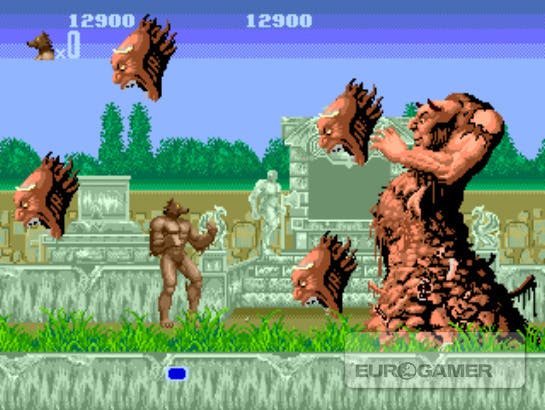Twenty years of the Mega Drive
To be this good took ages.
The Mega Drive is 20 years old today! SEGA's 16-bit behemoth launched in Japan on 29th October, 1988, and we'll be toasting its anniversary on Eurogamer over the next week, kicking off with this look back at the console itself. It's only right that we celebrate this milestone, since no-one was blowing up balloons or sticking up banners when the poor thing first arrived. There was no gap in the games market in 1988, and no room for new hardware.
SEGA's Master System had performed pretty well in a few territories, but not the ones a gaming power needed to dominate. Japan and the US were far too enamoured with the NES to pay much attention to any other hardware, and SEGA had allowed a lacklustre, disinterested alliance with Tonka to push the 8-bit console into obscurity and minority cult-worship, piling up hardware and game cartridges in warehouses with no real thoughts on what to do with them.
It's something of a consumer tradition that technically superior hardware doesn't necessarily win out, and the Master System found itself grazing in pastures alongside Betamax and 8-track tapes. The extra memory, dual-format games, the 3D glasses - none of these features could break through the Nintendo culture that had formed tightly around the games industry. But it wasn't all bad luck and marketing; the truth was that by the time SEGA bothered to launch the Master System in the UK, it was already into development of a console it had far more interest in - the MK1601. You'll remember it better as the Mega Drive.

It's well known as a 16-bit system, but that's like saying 'a four wheel drive car'; it tells you nothing about the other features that really made the hardware stand out. The Mega Drive was indeed 16-bit - making incredible use of the Motorola 68000 CPU - but its powerhouse brain was shored up by an equally muscular body. Sound processing was handled separately, reducing load on the processor so it could dedicate itself to powering arcade-quality games. The 512-strong colour palette ensured those games leapt off the screen, while a dedicated video processor threw huge sprites about in a way only previously managed in the arcades.
Impressive as this sexy black number was on schematic paper, SEGA had learned from experience that technical specifications didn't fit on a price-tag or advert. So it readied itself in the background with a hidden army of arcade ports ready to march under the Mega Drive banner. The arcades were enjoying a revival, and although SEGA struggled to penetrate the home market, it had conquered the commercial sector with some outstanding coin-op titles. The majority of these were built on the popular System 16 architecture, a platform almost identical to the new Mega Drive, and not by coincidence.

So SEGA was somewhat surprised when it released this incredible revolution in home gaming to the Japanese market and was met with a resounding silence. SEGA's native gamers had NES cartridges piled to the ceiling, and were more infatuated by NEC's PC Engine released one year previous almost to the day.
Moving fewer than half a million units in its first year of life, it was reasonable to believe - as the competition did - that SEGA had simply built a more powerful Master System, that would soon be unceremoniously forsaken in exactly the same manner. But SEGA still had the US market to test and - after the disastrous results of recruiting a toy manufacturer rather than a videogame developer to sell the Master System - initially set about forging a relationship with Atari to deliver the console across America. If the licensing deal hadn't broken down after SEGA of America and Jack Tramiel failed to see eye to eye, Atari would have controlled not only SEGA's presence in the US market, but also been able to actively position its own 7800 console ahead of the competition.
